20 Ideas for Designing a Peaceful Zen Garden
Creating a peaceful Zen garden is a wonderful way to add tranquility to your outdoor space. Inspired by Japanese design, Zen gardens focus on simplicity, natural elements, and calm aesthetics. Whether you have a small backyard or a spacious landscape, here are 20 ideas to help you design a relaxing Zen oasis.
1. Incorporate Raked Gravel or Sand
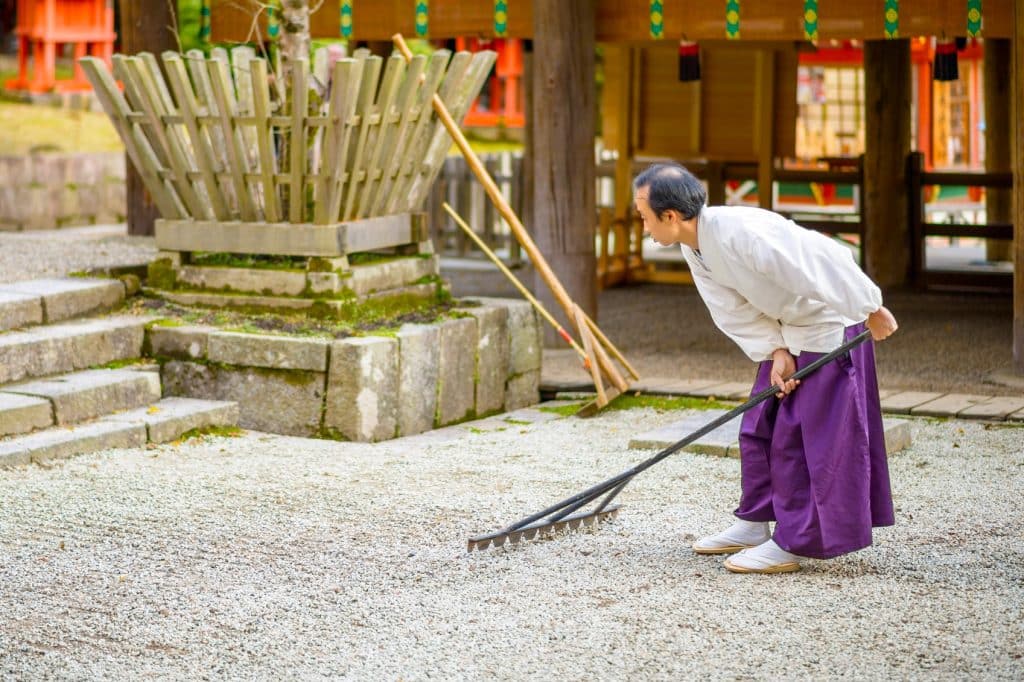
Raked gravel or sand is one of the most iconic elements of a Zen garden, symbolizing rippling water or waves. Use a rake to create delicate patterns and lines, adding texture and calm to the space. This feature is low-maintenance and adds a meditative quality, inviting you to rearrange the patterns whenever you like.
2. Add Bamboo Fencing for Privacy

Bamboo fences add a natural, minimalist barrier that helps block noise and distractions. The natural color and texture of bamboo blend beautifully with the Zen aesthetic, creating a secluded, peaceful feel. You can use bamboo fencing as a backdrop or a divider to separate different areas within the garden.
3. Install a Stone Pathway

A stone pathway leads you through the garden, inviting mindful steps and providing structure to the space. Arrange stones in organic shapes and patterns, either embedded in gravel or placed on soft grass. Choose smooth stones or stepping stones to match the garden’s overall aesthetic.
4. Place a Water Feature for Calm Ambiance
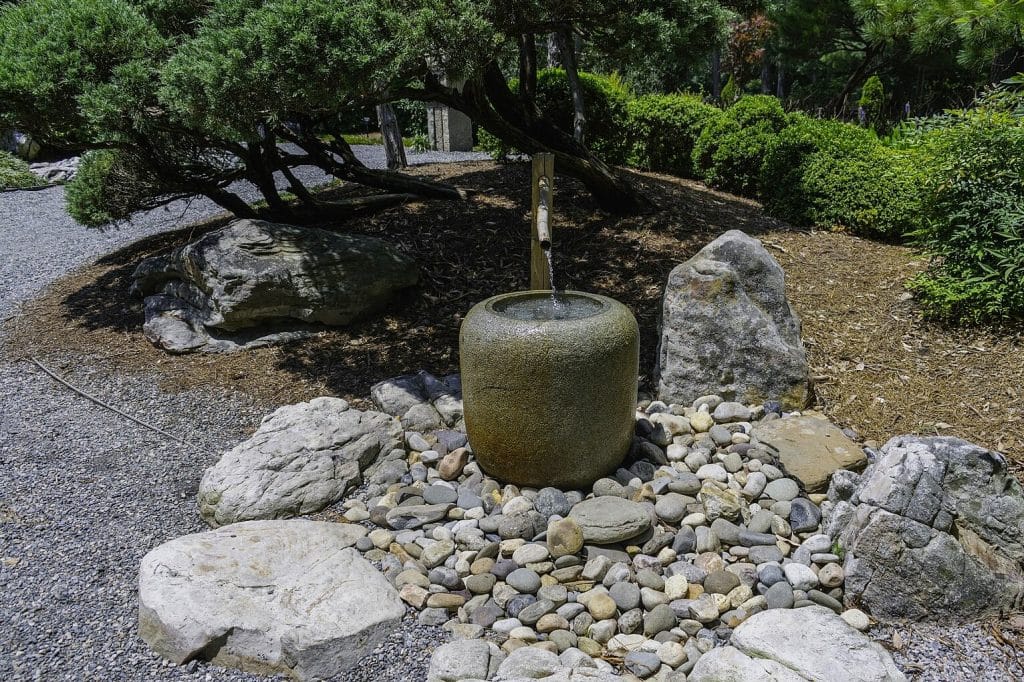
A small fountain, trickling stream, or simple stone basin adds a soothing water element. Flowing water creates a serene ambiance that helps mask background noise and encourages relaxation. Natural stone water basins are particularly common in Japanese Zen gardens and fit well with the minimalist theme.
Follow us for more of these articles.
5. Use Moss for Lush Ground Cover
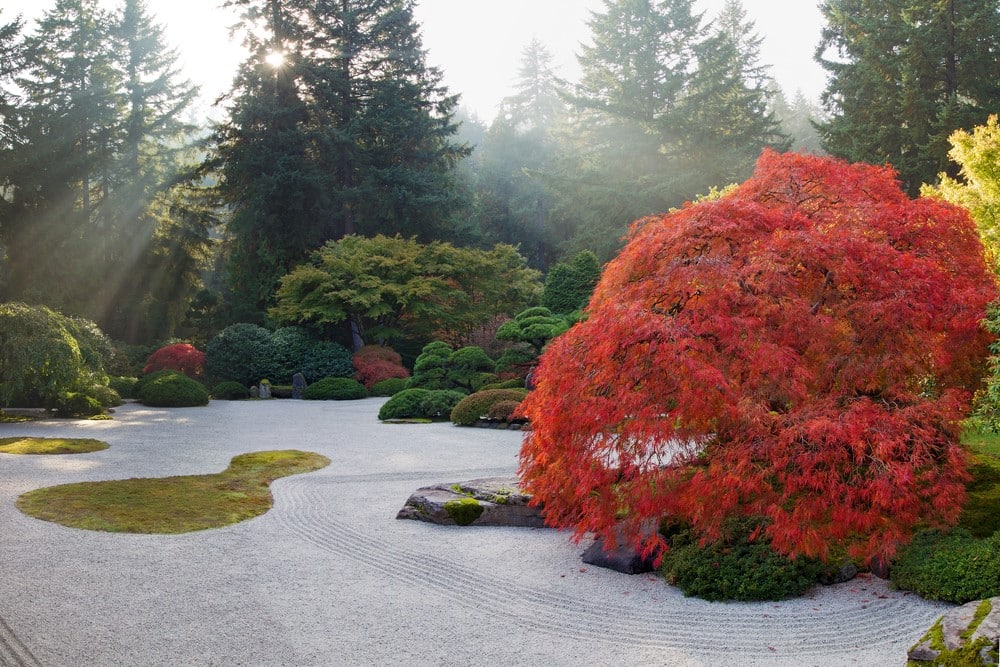
Moss is ideal for adding soft, lush greenery without overwhelming the garden. It’s low-maintenance and grows well in shaded areas, making it perfect for filling gaps between stones or covering shaded spots. Moss is a peaceful, organic alternative to grass and requires minimal upkeep.
6. Incorporate Japanese Maples for a Pop of Color
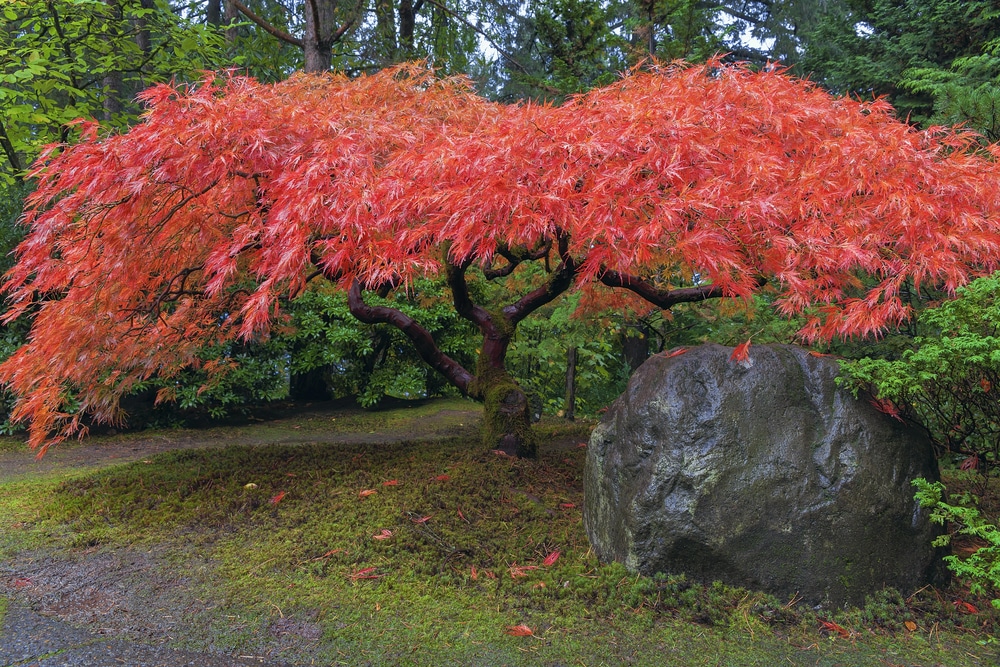
Japanese maples bring subtle colors that shift with the seasons, from bright greens to deep reds. Their delicate leaves add texture and elegance, making them perfect for focal points in a Zen garden. Planting a small Japanese maple adds height and visual interest without overwhelming the space.
Follow us for more of these articles.
7. Create a Meditation or Sitting Area

A simple bench or set of flat stones provides a designated spot for meditation or quiet reflection. Place it in a shaded area with views of the main garden features. Choose materials that blend with the landscape, like wood or stone, and keep the seating area uncluttered for a sense of calm.
8. Place Stones as Focal Points
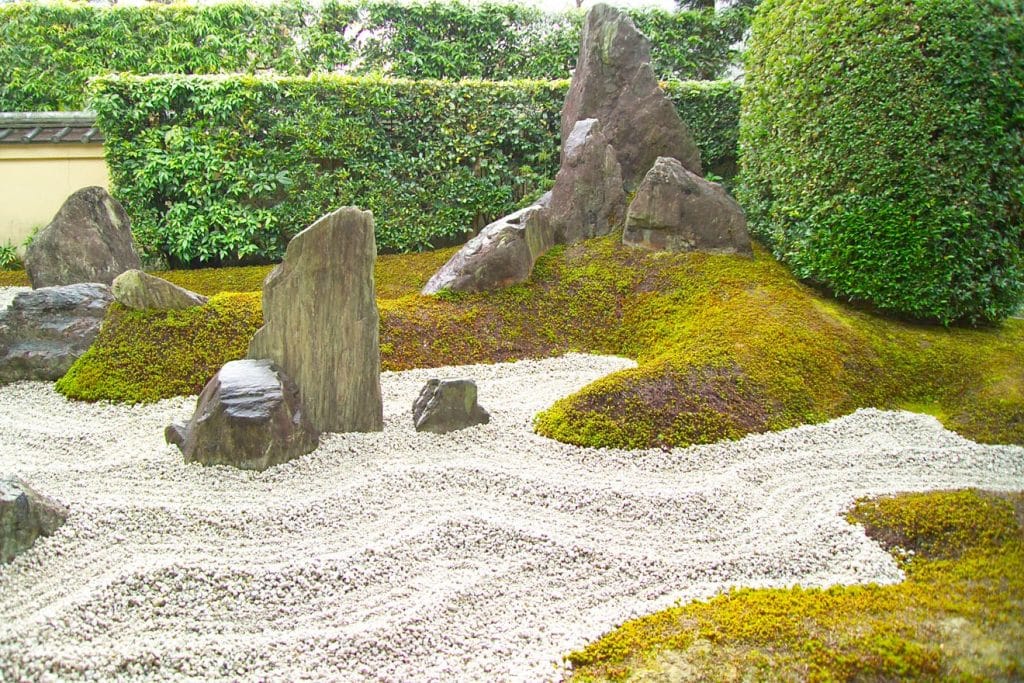
Large, strategically placed stones can act as focal points within the garden, symbolizing strength and permanence. Use natural, unpolished stones of varying sizes and arrange them in small clusters or as stand-alone features. Stone arrangements add structure and balance, evoking a feeling of timelessness.
Follow us for more of these articles.
9. Add Bamboo Plants for Height and Movement
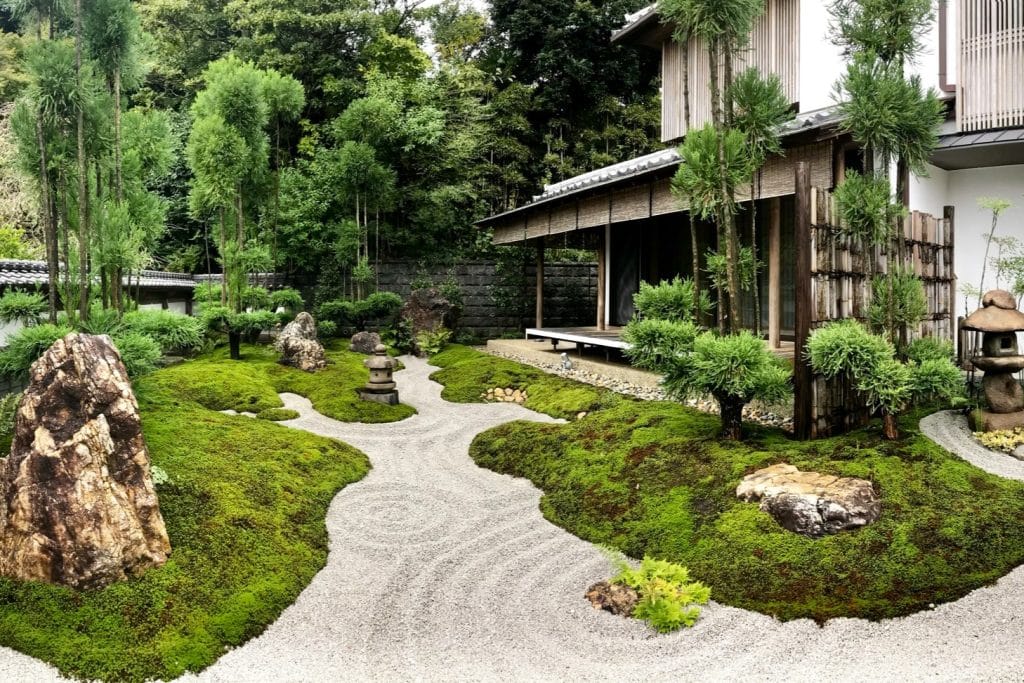
Bamboo adds height and natural movement as it sways gently with the wind. It’s low-maintenance and versatile, fitting perfectly with the Zen aesthetic. Plant bamboo in clumps or near water features to create a calming, layered look.
10. Incorporate Ornamental Grasses
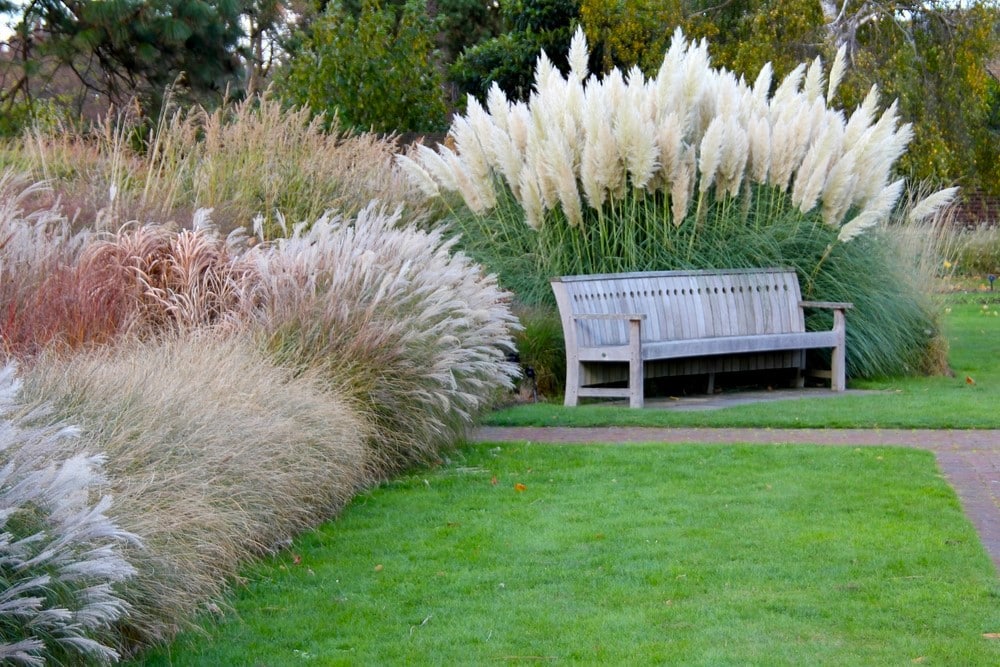
Ornamental grasses provide soft, flowing textures that complement rocks and stones. Choose varieties like Japanese forest grass or fountain grass, which grow well in Zen gardens and require minimal care. Their gentle sway adds a natural, calming effect, creating a peaceful vibe.
Follow us for more of these articles.
11. Design a Simple Bridge
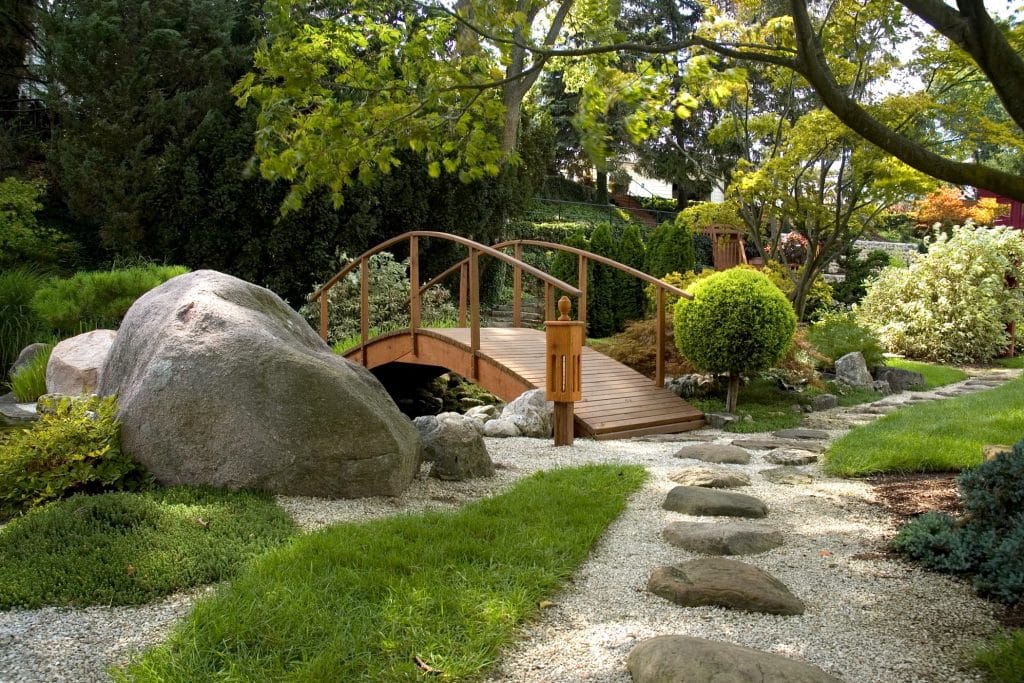
A small, arched bridge can be a symbolic feature in a Zen garden, representing transition and peace. Use wood or stone materials, and place it over a gravel bed or small pond. It adds charm and structure without overpowering the minimalist feel of the garden.
12. Use Lanterns for a Touch of Tradition

Japanese stone lanterns are classic Zen garden decor and provide a subtle, cultural touch. Place lanterns near pathways or as accents around focal points. The soft shapes and weathered look of stone lanterns contribute to a grounded, ancient feel.
Follow us for more of these articles.
13. Incorporate Minimalist Planting
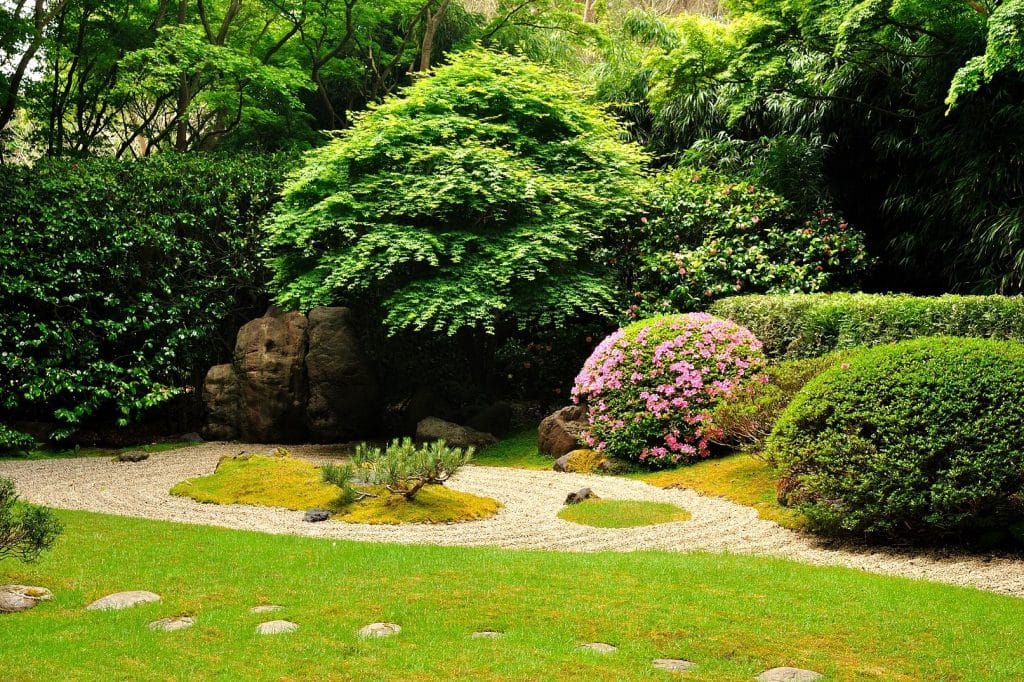
A Zen garden thrives on simplicity, so avoid overloading it with plants. Choose a few carefully selected plants, like bonsai, azaleas, or evergreen shrubs, to maintain the serene atmosphere. The minimalist approach keeps the focus on natural shapes and textures, enhancing tranquility.
14. Add Wooden or Stone Benches

Simple benches made from wood or stone create inviting spots for rest and reflection. Place them thoughtfully, like near a water feature or under a shaded tree, and keep their design minimalist. They’re perfect for enjoying the peace of the garden and for meditative breaks.
Follow us for more of these articles.
15. Create a Small Pond or Koi Feature
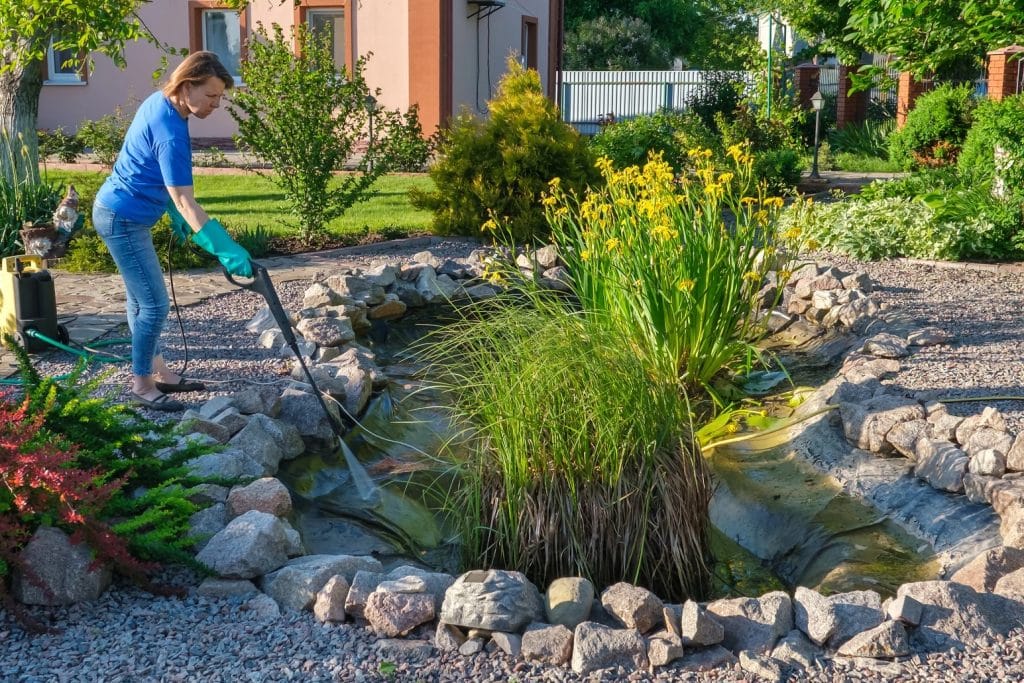
If you have the space, a small pond or koi pond adds life and serenity to a Zen garden. The reflective water adds visual interest and can be home to koi fish, which bring color and a sense of calm. Add a few floating plants or water lilies to enhance the pond’s natural feel.
16. Use Pebbles and Small Stones for Texture
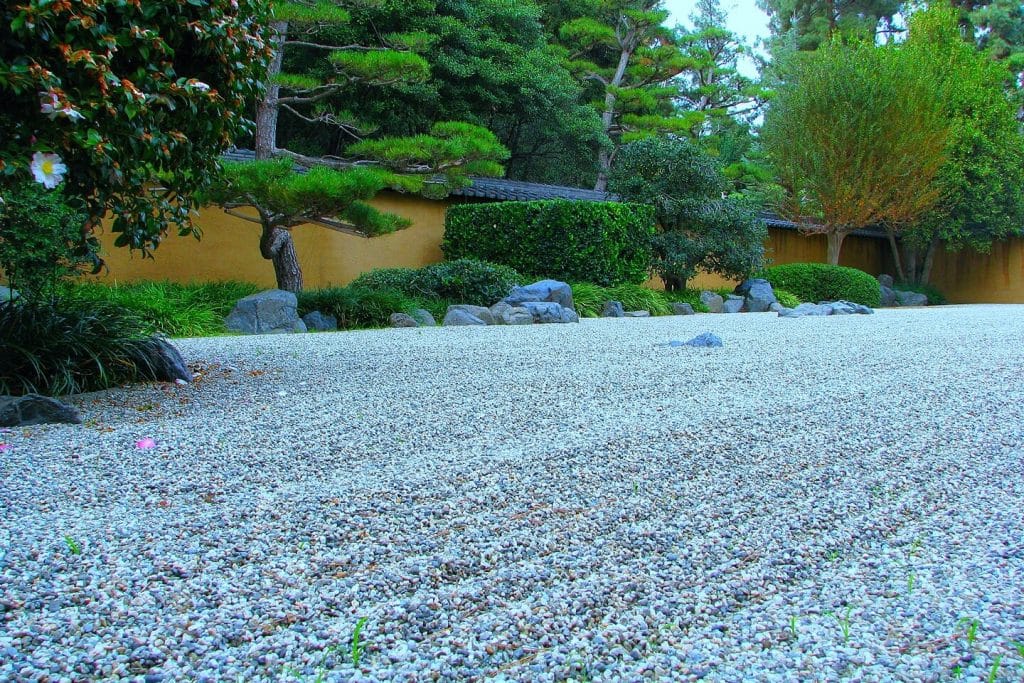
In addition to sand or gravel, small pebbles and stones create texture and depth throughout the garden. Use them around plant beds, pathways, or water features to add visual contrast. Their different colors and textures enhance the natural look, giving the garden a tranquil vibe.
Follow us for more of these articles.
17. Incorporate Bonsai for Artistic Form
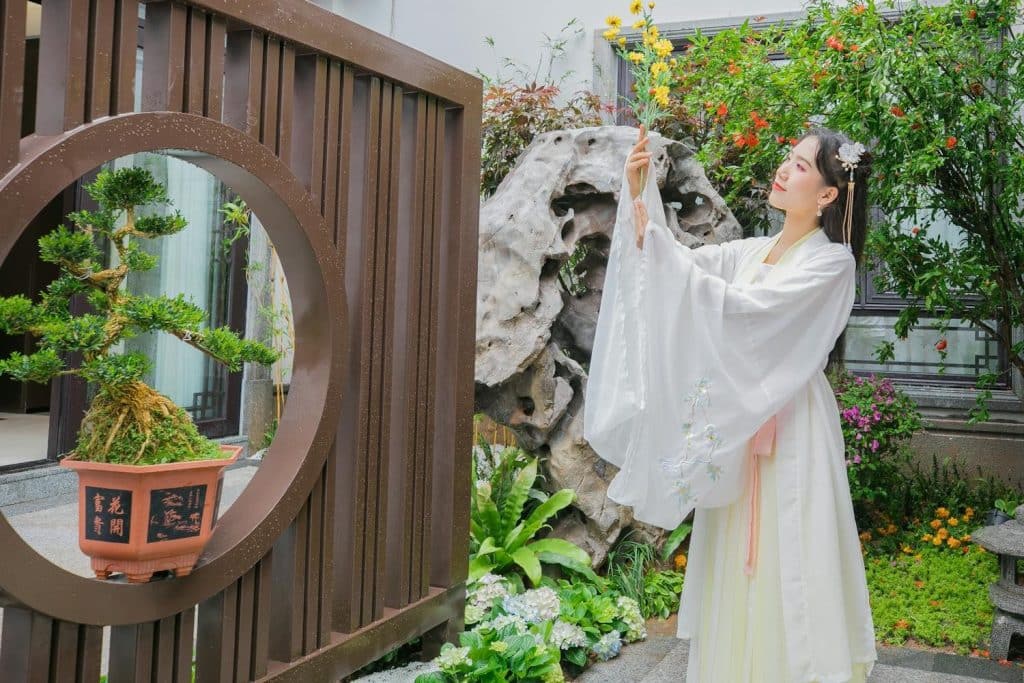
Bonsai trees add an element of art and patience to the garden. These miniature trees are perfect for Zen gardens, representing discipline and care. Place them in strategic spots, like near seating areas or pathways, where their intricate shapes can be appreciated up close.
18. Use Stone Statuary for Symbolism
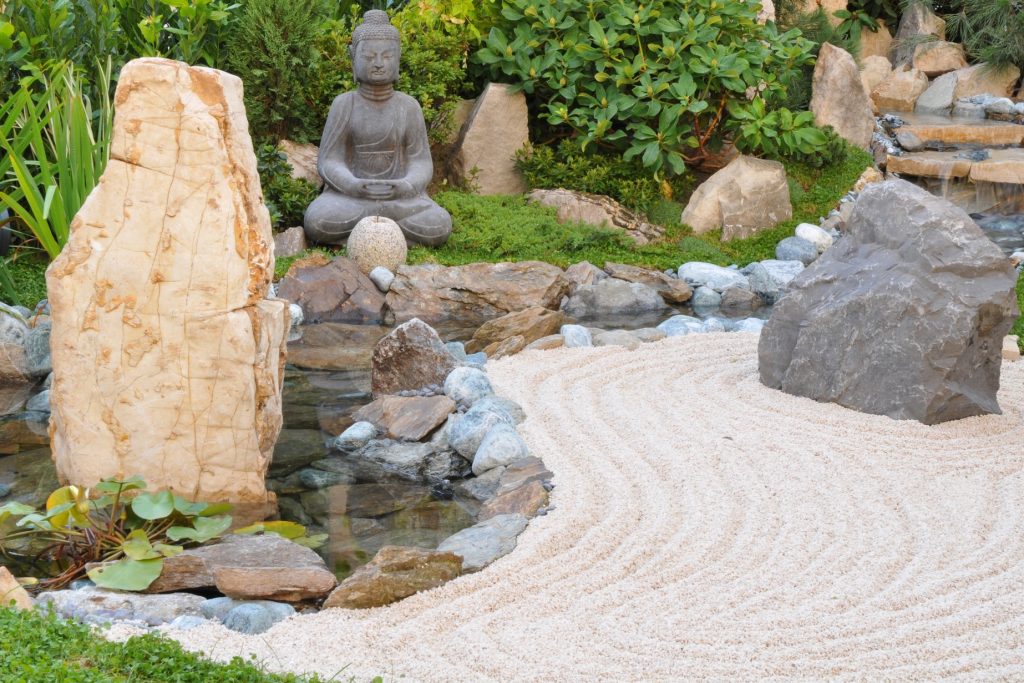
Small statues, like a Buddha or pagoda, add subtle spirituality to the garden without overwhelming the space. Place them sparingly to preserve the minimalist feel and keep them low to the ground, as Zen gardens favor harmony and understatement.
Follow us for more of these articles.
19. Include Textured Wood Elements
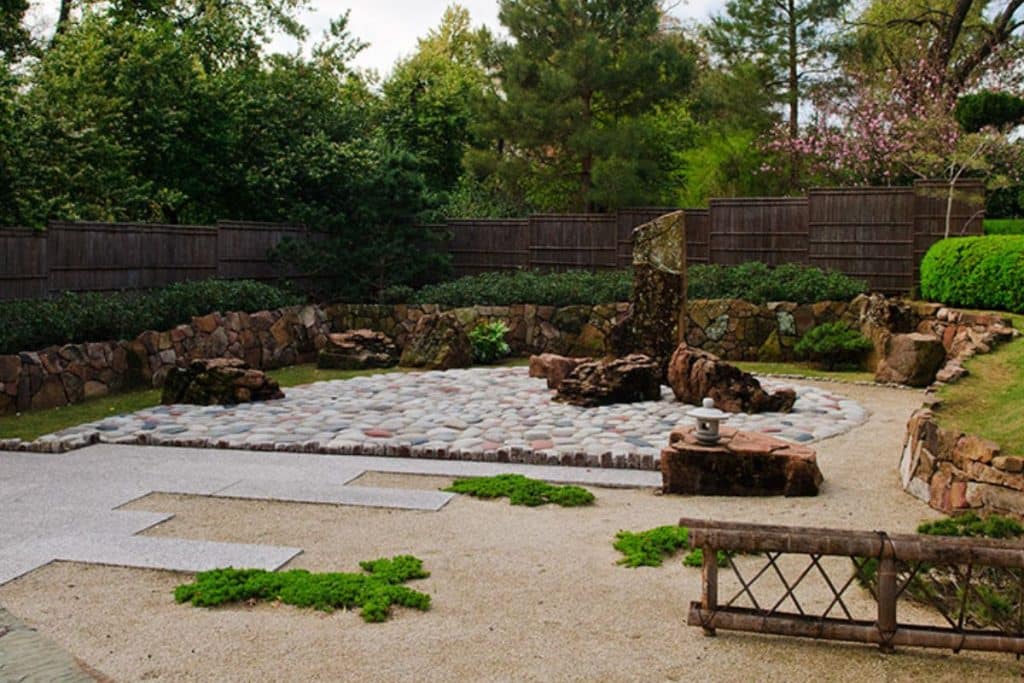
Incorporate natural wood elements like logs, driftwood, or simple wood sculptures. Their weathered texture adds to the rustic, natural feel, blending seamlessly with stones and plants. Wood complements other natural elements, bringing warmth and balance to the cool tones of rock and gravel.
20. Install a Zen Wind Chime for Subtle Sound

Hang a small, delicate wind chime to add soft, peaceful sounds to your Zen garden. Choose one made from bamboo, stone, or metal, as these materials produce soothing, gentle tones. It adds a layer of sensory relaxation and makes the garden feel alive and welcoming.
Like our content? Be sure to follow us!






